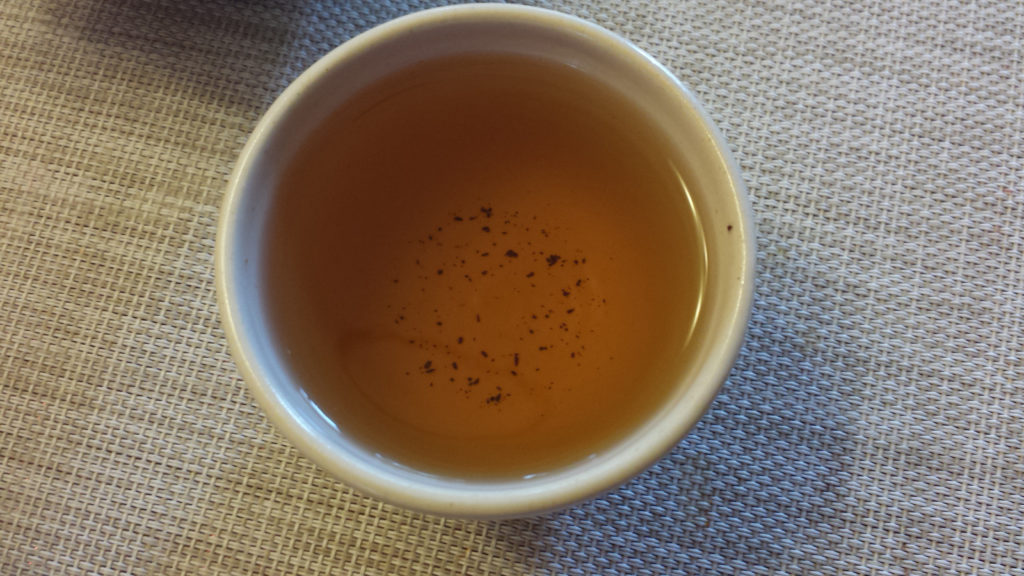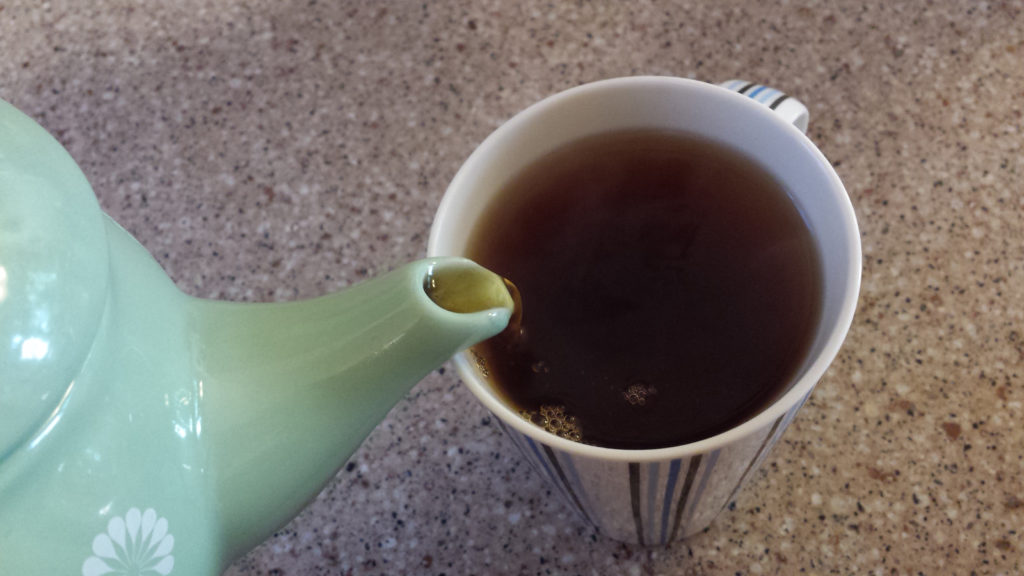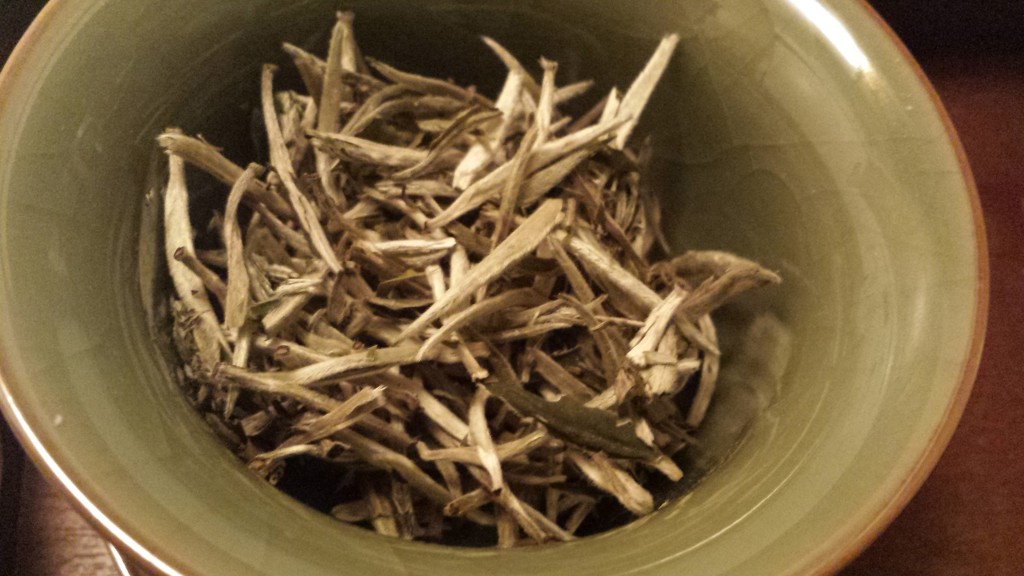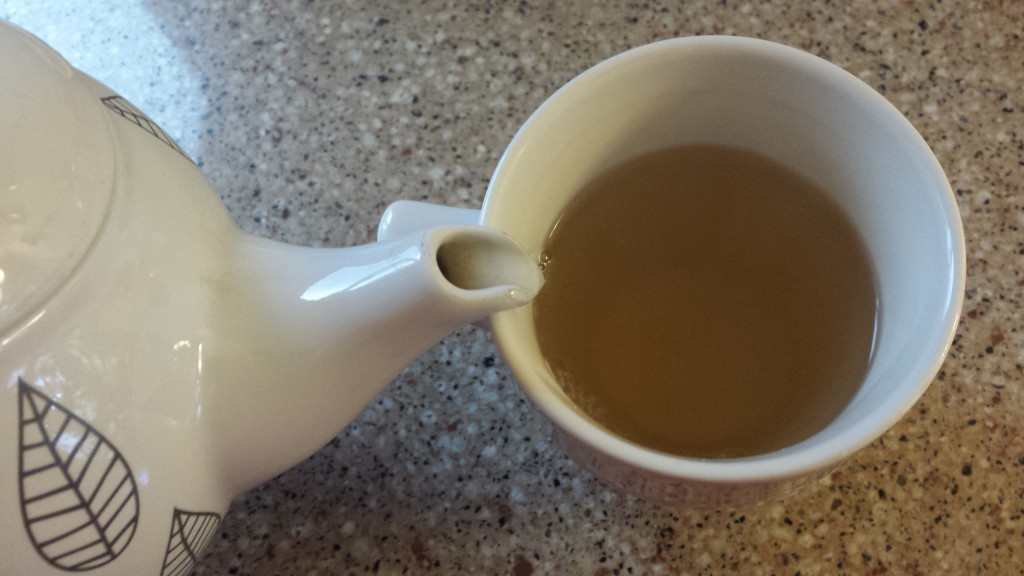Teavivre is one of my favourite tea companies, and when they have a sale, I always try to take advantage of it. They’re having a sale right now to celebrate their 6th anniversary, and it’s wrapping up tomorrow. So, while there’s still time, let me tell you about my favourite teas ever, the ones I always want to keep in my cupboard, whether they’re from Teavivre or other tea companies.
Peach Jasmine Dragon Pearls from Teavivre
Jasmine pearls are a tea staple, but I love the twist that Teavivre provides by flavouring them with peach. The peach is subtle, but it’s there, and the first steep or two always has a slight fruit hint to it. Subsequent steeps are just jasmine-flavoured, but hey, that’s still a win.
This is one the teas I keep with me at work since it’s so dependable. I just bought a whopping 300 grams of it! Part of that will be given as gifts to others, but I’ll be keeping at least half for myself. I bet I could make 150 grams last all year at work, especially since I can steep a single serving for at least two days in a row.
Superfine Tan Yang Gong Fu Black Tea from Teavivre
Yes, the name is a mouthful, but the tea itself is an even better one. It’s more expensive than some of Teavivre’s other offerings, but it’s so good. Quite possibly my favourite tea EVER. When you brew it up just right, it smells like dark chocolate, and it tolerates rough treatment well. Steep it too long? Add too much leaf? Use boiling water? No problem, it’s flexible. The only thing that doesn’t work is using water that’s too cool. Then it just tastes like muck.
Laoshan Black Tea from Yunnan Sourcing
Yunnan Sourcing refreshes their tea every season, so the batches may undergo some changes, and the URLs aren’t static. But, that aside, you can always just search for “laoshan black” on their site and see what comes up.
The Laoshan black tea that I have from them tastes chocolaty, but there’s also an alkalinity to it that reminds me of bread and biscuits. So, chocolate biscuits. And, like the Superfine Tan Yang Gong Fu above, it’s pretty forgiving of brewing mistakes.
Le Digestif from David’s Tea
David’s Tea is ubiquitous in Canada, and now that Teavana is closing, it looks like its place at the top of the heap is secure. Thus, it’s easy to assume that as Canada’s “gateway” purveyor of tea, its stuff is meant only for noobs.
Which is sad, because there are some genuine gems that are part of David’s Tea’s permanent collection, and Le Digestif is one of them.
I mean, if they ever decide to discontinue this tea, I will WEEP. I have a lot of digestive problems, and Le Digestif, with its mix of mint, fennel, ginger and mango, is one of the only teas out there that regularly makes my stomach feel better. It may be an acquired taste, especially if you hate fennel, but it WORKS.
Forever Nuts from David’s Tea
You need to add some agave syrup to this to really get it going, but when you do, Forever Nuts tastes like coziness personified. The apple, the cinnamon, the almond, the pastry flavouring! It’s hard to go wrong here.
Cranberry Orange Cider Rooibos from 52Teas
Dear Anne, I beg you, please make this cider part of your permanent collection at 52Teas. I went gaga over it when I reviewed it in 2015. I have restocked this at least twice, and I’m holding on to my last 30 grams like Scrooge because I don’t know what I’ll do when I finally finish what’s left in my tin.










 Remember that whole thing about it smelling like corn? It tastes like corn, too! Like a fresh, sweet ear of corn, with maybe a pat of butter on the side — grainy, a bit rich, but still sweet. I was totally bowled over by this.
Remember that whole thing about it smelling like corn? It tastes like corn, too! Like a fresh, sweet ear of corn, with maybe a pat of butter on the side — grainy, a bit rich, but still sweet. I was totally bowled over by this.





